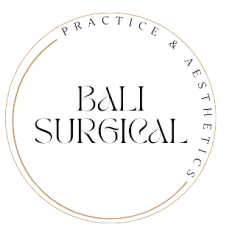HI-DEF LIPOSUCTION
Hi-Def Liposuction in Charleston, WV – Achieve Sculpted Definition with Precision Body Contouring
Are you looking to enhance muscle definition and sculpt areas that diet and exercise alone cannot achieve? Hi-Def Liposuction, also known as VASER Liposuction, is an advanced body contouring procedure designed to remove stubborn fat while highlighting natural muscle tone. At Charleston Surgical Arts, we specialize in high-definition liposuction to give you a more defined, athletic, and sculpted appearance.
What is Hi-Def Liposuction?
Hi-Def Liposuction is an advanced form of VASER liposuction that removes stubborn fat deposits while enhancing muscle definition in targeted areas. Unlike traditional liposuction, Hi-Def Lipo selectively removes fat, accentuating natural contours for a more chiseled and toned appearance.
This minimally invasive procedure is ideal for individuals who are already fit but struggling with isolated fat deposits that prevent them from achieving their desired body shape.
Why Choose Charleston Surgical Arts for Hi-Def Liposuction?
✔ Expert Body Contouring Surgeons – Our team specializes in advanced Hi-Def VASER Liposuction, ensuring precise fat removal and superior sculpting results.
✔ Personalized Treatment Plans – We customize every procedure based on your unique body shape and aesthetic goals.
✔ Advanced VASER Technology – We use ultrasound-assisted liposuction for greater precision, reduced trauma, and enhanced skin tightening.
✔ Minimally Invasive with Quick Recovery – Hi-Def Lipo offers faster healing times, minimal downtime, and long-lasting results.
Common Treatment Areas for Hi-Def Liposuction
✔ Abdomen & Waist – Sculpt and define six-pack abs and a more chiseled core.
✔ Chest – Create a more defined, masculine chest contour.
✔ Arms – Remove stubborn arm fat for a more toned and sculpted appearance.
✔ Back & Flanks – Eliminate love handles and enhance muscle definition.
✔ Thighs & Hips – Define leaner legs and shaped thighs.
✔ Buttocks – Enhance and contour the glutes for a more lifted look.
✔ Chin & Jawline – Remove excess fat under the chin for a sharper jawline.
How Does the Hi-Def Liposuction Procedure Work?
✔ Step 1: Anesthesia & Preparation – Local anesthesia or sedation is used for a comfortable experience.
✔ Step 2: Fat Cell Disruption with VASER Technology – Ultrasound waves break down stubborn fat while preserving surrounding tissues.
✔ Step 3: Fat Removal & Sculpting – A microcannula gently removes excess fat, revealing enhanced definition and muscle contours.
✔ Step 4: Skin Tightening & Refinement – The remaining skin tightens naturally, creating smooth, firm results.
Who is a Good Candidate for Hi-Def Liposuction?
✔ Individuals who work out regularly but struggle with stubborn fat pockets.
✔ Those at a healthy, stable weight with good skin elasticity.
✔ Patients looking for enhanced muscle definition and body sculpting.
✔ Non-smokers in good overall health.
What to Expect After Hi-Def Liposuction
⏳ Minimal Downtime – Most patients return to light activities within a few days.
🩹 Temporary Swelling & Bruising – Mild discomfort that subsides within 1-2 weeks.
👕 Compression Garment Required – Worn for at least 3 weeks to support healing and skin tightening.
💪 Immediate & Progressive Results – Initial results are visible within weeks, with full definition appearing over 3-6 months.
Maintaining Your Hi-Def Liposuction Results
To preserve the sculpted definition from Hi-Def Liposuction, patients should maintain a healthy diet and consistent exercise routine. Since the removed fat cells do not regenerate, results are long-lasting with proper lifestyle habits.
Schedule Your Hi-Def Liposuction Consultation Today!
Are you ready to achieve next-level body sculpting and enhanced muscle definition? At Charleston Surgical Arts, we specialize in Hi-Def Liposuction using VASER technology to help you get the sculpted physique you’ve always wanted.
📞 Call now to book your consultation and take the first step toward a chiseled, contoured body!
